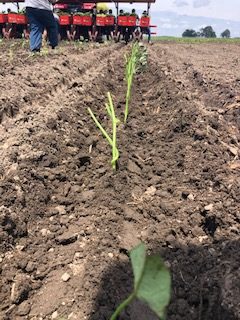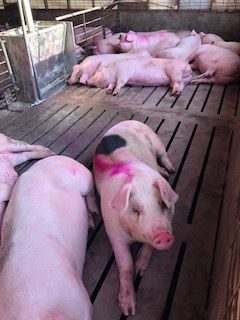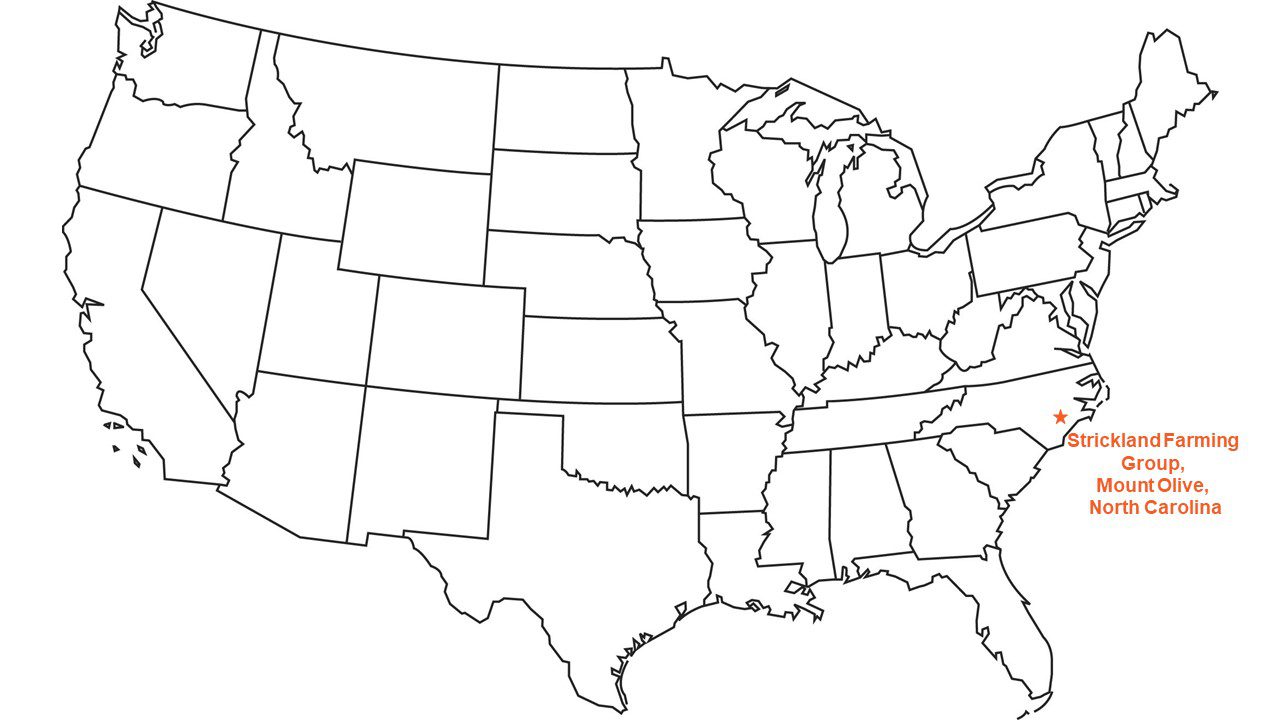 While I know that many areas of the U.S. are desperate for the rain to stop, in our area of the Southeast, we are desperate for rain. We had a very dry planting season, and with our sandy soils, we are always just 24 hours away from a drought. Hot weather, with temperatures reaching more than 35°C, or 95°F, adds stress to our crops. At times, we get so dry we start hoping for a tropical storm, which to some may sound crazy.
While I know that many areas of the U.S. are desperate for the rain to stop, in our area of the Southeast, we are desperate for rain. We had a very dry planting season, and with our sandy soils, we are always just 24 hours away from a drought. Hot weather, with temperatures reaching more than 35°C, or 95°F, adds stress to our crops. At times, we get so dry we start hoping for a tropical storm, which to some may sound crazy.
We finished planting soybeans in mid-May, and they have emerged well. Of all our crops, the soybeans look the best right now because they need less moisture at this growth stage than our other crops. We have started applying post-emergence herbicide to control weeds in our soybeans, and hope to have this job completed during the first half of June.
These soybeans will be processed into soybean meal and oil. This soybean meal feeds both our pigs and our turkeys. The animals convert it into meat for kitchen tables around the world.
Our current group of pigs has been growing very well. Some of them began reaching market weight, between 127 and 136 kg, or 280 and 300 pounds, in late May. At this stage, we sort the pigs that are big enough and send them to market, allowing the smaller pigs to grow better. We expect to have all of this group of pigs sold by mid-June.
 Thankfully, we avoided an outbreak of avian influenza, or bird flu, in our turkeys, and they are growing well. The turkeys we received on April 15 have now reached 9 to 11 kg, or 20 to 25 pounds, which is about half of their market weight. Fortunately, no more flocks in our area have been infected with bird flu. Our strict biosecurity practices like using clean boot coverings every time someone enters a barn and other measures successfully protected our turkeys. However, neighbors who had to depopulate haven’t yet started repopulating their barns. Some of our employees helped clean up the last affected farm in the area, which belongs to a good friend. We are hopeful that the risk has passed and these farms can be repopulated soon.
Thankfully, we avoided an outbreak of avian influenza, or bird flu, in our turkeys, and they are growing well. The turkeys we received on April 15 have now reached 9 to 11 kg, or 20 to 25 pounds, which is about half of their market weight. Fortunately, no more flocks in our area have been infected with bird flu. Our strict biosecurity practices like using clean boot coverings every time someone enters a barn and other measures successfully protected our turkeys. However, neighbors who had to depopulate haven’t yet started repopulating their barns. Some of our employees helped clean up the last affected farm in the area, which belongs to a good friend. We are hopeful that the risk has passed and these farms can be repopulated soon.
At the same time, our crops are progressing, despite the heat and dry weather. In addition to our soybeans, all our corn and tobacco has been planted and is growing. About half our sweet potatoes were planted by the beginning of June. We’ve planted about two-thirds of our pickling cucumbers to spread out harvest during late April to Mid-May. We planted the last planting of pickling cucumbers on June 8. We will begin harvesting the first planted cucumbers in mid-June.
In our area, most pickling cucumber harvest is done by hand, and that’s what our crew does. We harvest each field multiple times, as new cucumbers grow on existing vines and reach the right size for pickling. Some fields can be harvested as many as 10 times during a season.
Even though there is a lot we can’t control — especially the weather — we are working hard to do our part to put a variety of food, both meat and vegetables, on our customers’ plates.

